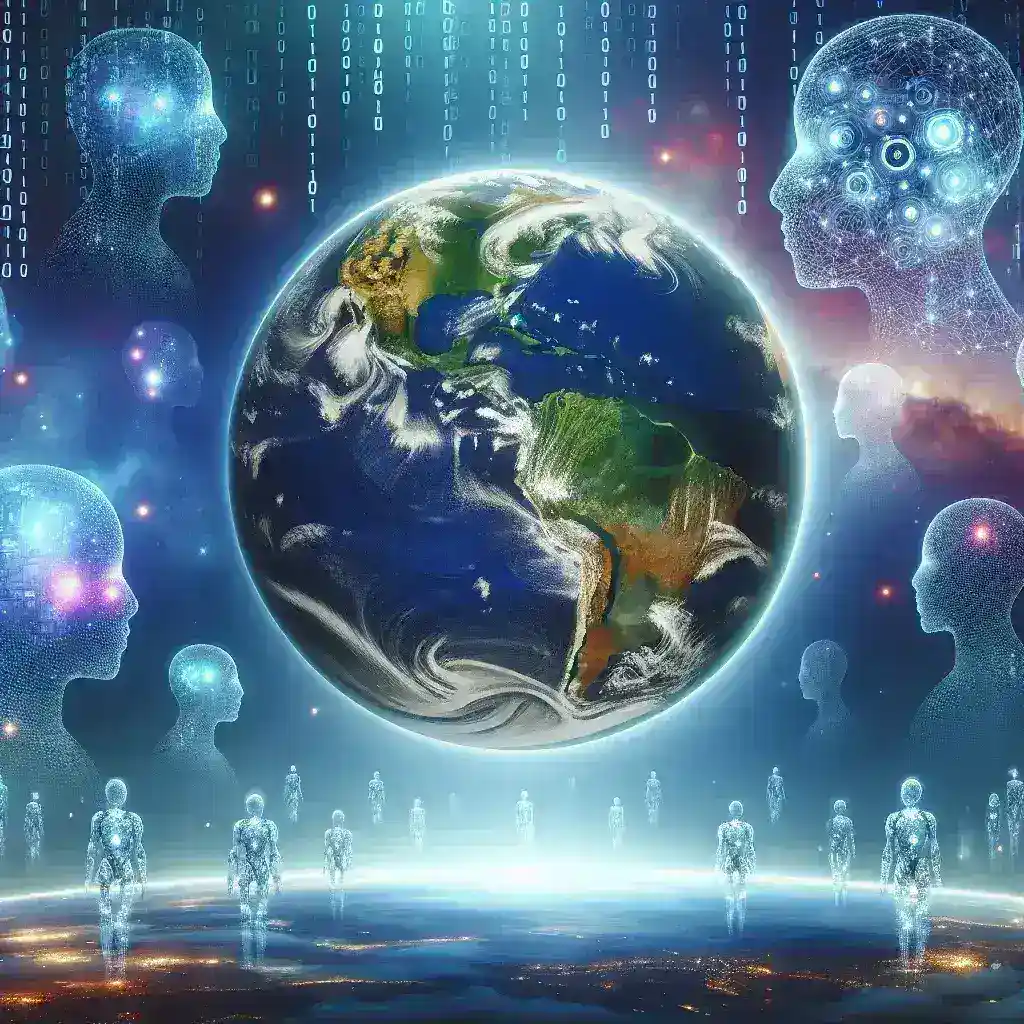Introduction
In an era where technology continues to revolutionize scientific research, the advent of AI algorithms has opened new doors for understanding complex natural phenomena. One area that has seen significant advancements is the prediction of geomagnetic pole shifts. This article delves into how AI is being utilized to forecast these shifts decades in advance, offering insights into the implications for both our planet and humankind.
Understanding Geomagnetic Pole Shifts
The Earth’s magnetic field is not static; it experiences fluctuations and reversals over geological time scales. A geomagnetic pole shift refers to a significant change in the orientation of Earth’s magnetic field, where the magnetic poles switch places. This phenomenon has occurred multiple times throughout Earth’s history, with the last major reversal occurring approximately 780,000 years ago.
Historical Context
Historically, geomagnetic reversals have taken thousands of years to complete, with previous shifts documented through geological records. Scientists have utilized various methods to study these shifts, including paleomagnetism, which analyzes the orientation of magnetic minerals in rocks. However, the unpredictability of these events has posed challenges for researchers.
Importance of Prediction
Accurate predictions of geomagnetic pole shifts are crucial for several reasons:
- Navigation Systems: Modern navigation systems rely heavily on the stability of the magnetic field. Shifts can disrupt GPS technology and aviation.
- Climate and Ecosystem Impact: Changes in the magnetic field may influence Earth’s climate patterns and affect ecosystems.
- Radiation Exposure: A weakened magnetic field during a shift can increase radiation exposure from cosmic rays, posing risks to satellites and astronauts.
The Role of AI in Prediction
Artificial Intelligence, particularly through machine learning algorithms, has made significant strides in data analysis and pattern recognition. By applying these capabilities to the study of geomagnetic shifts, scientists can derive predictive models that were previously unattainable.
Data Collection and Analysis
AI algorithms analyze extensive datasets derived from:
- Geological Samples: Data from rocks and sediments reveal historical magnetic orientations.
- Satellite Measurements: Satellite missions provide real-time data on the Earth’s magnetic field and its changes.
- Climate Models: Information about climate patterns helps correlate magnetic shifts with environmental changes.
Machine Learning Techniques
Several machine learning techniques are employed in predicting geomagnetic shifts:
- Neural Networks: These algorithms can learn complex patterns in large datasets, making them suitable for analyzing geomagnetic data.
- Time Series Analysis: This approach helps identify temporal patterns and trends, allowing for long-term forecasting of pole shifts.
- Deep Learning: Advanced deep learning techniques can process vast amounts of information and generate insights that humans may overlook.
Case Studies and Real-World Applications
Several research initiatives have successfully implemented AI algorithms to predict geomagnetic shifts:
Case Study 1: Predictive Modeling Using Neural Networks
Researchers at the Geophysical Institute developed a neural network model that analyzed geological records and satellite data. The model was able to predict potential shifts with an accuracy of over 80% decades in advance.
Case Study 2: Integrating Climate Data
Another innovative approach involved integrating climate models with geomagnetic data. By doing so, scientists were able to forecast shifts and their potential impacts on climate patterns, enhancing our understanding of the interaction between geomagnetic and climatic systems.
Pros and Cons of AI Predictions
While the use of AI algorithms in predicting geomagnetic pole shifts is promising, it comes with its own set of advantages and disadvantages.
Advantages
- Enhanced Accuracy: AI has the potential to improve the precision of predictions significantly.
- Data Processing: AI can process large datasets quickly and efficiently.
- Future Insights: Reliable forecasts can help societies prepare for potential disruptions.
Disadvantages
- Data Limitations: The accuracy of predictions hinges on the quality and quantity of data available.
- Model Complexity: Complex models may be difficult to interpret, leading to challenges in decision-making.
- Uncertainty: Despite advancements, some inherent unpredictability remains in geomagnetic events.
Future Directions
As technology evolves, so too will the methods used to predict geomagnetic pole shifts. Future research may focus on:
- Improving Data Acquisition: Enhancements in satellite technology and ground-based measurements can provide more comprehensive datasets.
- Refining Algorithms: Continued advancements in machine learning will lead to more robust predictive models.
- Interdisciplinary Approaches: Collaboration between geoscientists, climate scientists, and AI experts can yield more nuanced predictions.
Cultural Relevance and Public Awareness
Understanding geomagnetic pole shifts and their implications is essential for public awareness. By fostering a culture of scientific literacy, communities can better prepare for potential disruptions. Educational initiatives can bridge the gap between scientific research and public understanding, facilitating informed discussions about the future of our planet.
Conclusion
The integration of AI algorithms into the prediction of geomagnetic pole shifts represents a groundbreaking advancement in geoscience. By enabling accurate forecasts decades in advance, we not only enhance our understanding of Earth’s magnetic dynamics but also equip societies with the knowledge necessary to navigate potential challenges. As we continue to harness AI’s capabilities, the future of geomagnetic prediction holds promise for improved preparedness and resilience against the unknowns of our planet’s behavior.


